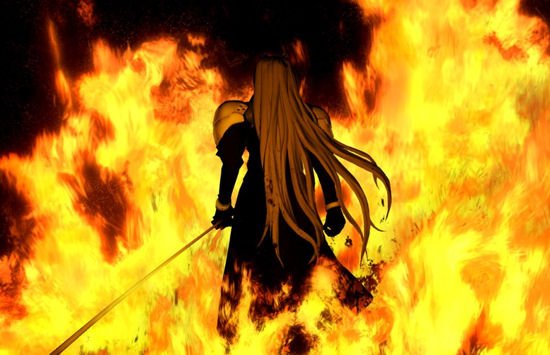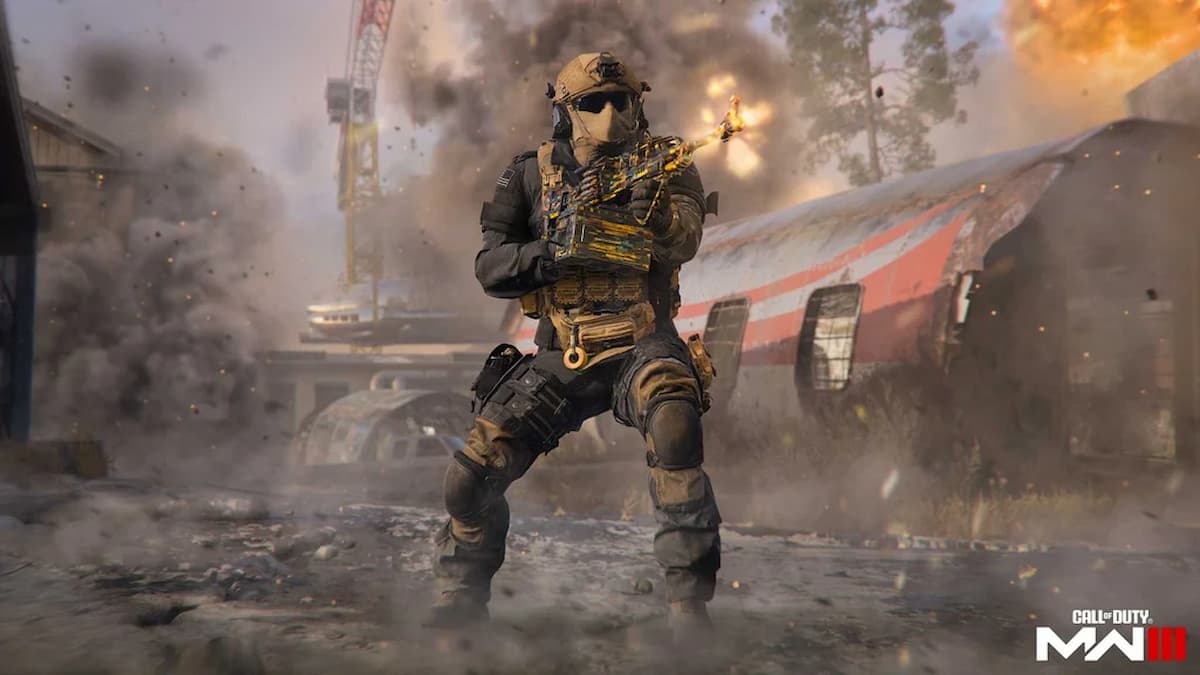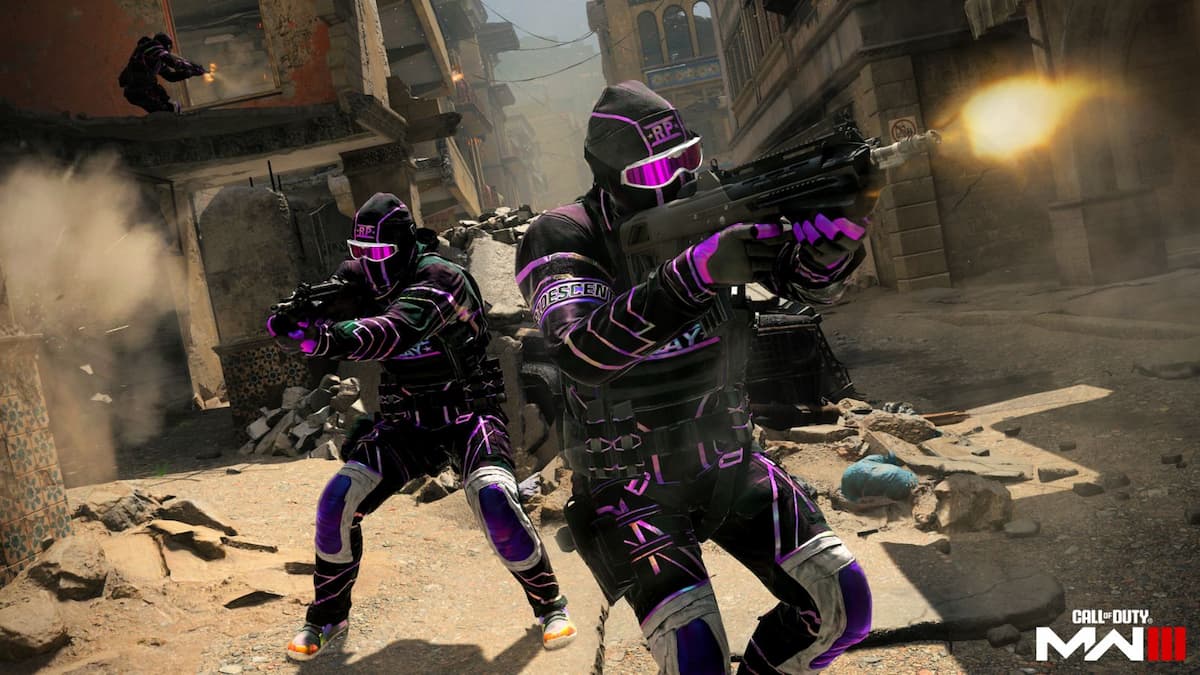Every true gamer is aware of who Sephiroth is. Even if they don’t explicitly know him, they know of him. The silver-haired, katana-wielding antagonist of Final Fantasy VII, the notorious One Winged Angel has been a measuring stick of videogame villainy since he first burned Nibelheim to the ground over ten years ago.
Although he was killed at the end of Final Fantasy VII, Shinra’s infamous soldier was far from dead. Square-Enix has seen to that. In countless spin-offs, sequels, prequels and outside appearances, Sephiroth has remained a constant presence in videogames since 1997, and that presence doesn’t appear to be going away any time soon.
With Crisis Core and Dissidia coming soon, both featuring the iconic Son of Jenova, we look back over Sephiroth’s many notable appearances over the long years and ask the question: Is it impossible to kill Sephiroth, or will Square Enix ever find that final nail to drive into his obisidian coffin?

When Sephiroth appeared in Final Fantasy VII, it’s safe to say that he stole the show. His introduction was led to with subtle yet foreboding references. Before he’d even appeared on-screen we were shown exactly what he was capable of as the player followed a trail of blood and destruction, finding the man who was believed to be the villain of the piece, President Shinra, face down on his desk with Sephiroth’s sword in his back. We hadn’t even seen the former member of Shinra’s elite SOLDIER unit yet, but we’d already been taught to fear him.
His portrayal was nothing short of masterful. He had an imposing and unforgettable visual appeal, his twisted mission to fulfill “mother’s” wishes and rule the world as a God was complex and engaging — even the sinister tolling of the bell that introduced his signature theme was a harbinger of doom, and a sound that gamers learned to dread. Gaming had found its crown prince of darkness, and he was truly a fitting ruler.
Of course, with such an iconic creation comes the demand for more. Ironically, it was Sephiroth’s perfectly bookended story that saw the same book being opened time and time again, until it’s the year 2008, and his face can be seen everywhere.
From FFVII, Sephiroth would go on to appear as a selectable character in the Dream Factory/Namco/Square fighting game Ehrgeiz, where he was one of six FFVII characters including Cloud, Tifa, Yuffie, Vincent and Zack. 1998’s Ehrgeiz was a 3D fighting game that held no place in FFVII canon and resembled a wrestling title with its 360 degree movement. The game is sometimes known as the “Final Fantasy Fighter,” or at least it was before Dissidia was announced. It is also a highly sought after collectible due to its rarity.
So far, so good. It would be clear that Sephiroth and his pals would be making the odd cameo, and at the time, this was a very quirky idea for a game that intrigued many a gamer who was unable to track it down. His next camero would be even more effective, as he found his way into Kingdom Hearts as a sub-boss.

Kingdom Hearts, released in 2002 on the PlayStation 2, was an amazing collaboration between Square-Enix and Disney to create a world which saw the latter’s huge stable of characters interacting with Final Fantasy creations in an original and highly unique universe. Sephiroth’s appearance in Kingdom Hearts was almost completely perfect, and truly captured the sense of awe and dread that had made the character so memorable in the first place. He was the final battle in the game’s Arena, a sidequest area where you did battle with a variety of enemies for prizes. As main character Sora entered the arena, a white symbol of light appeared in the sky before a man in black with a black feathery wing beamed down. As he stood up and turned to face Sora, his epic battle theme One Winged Angel played and Sephiroth was revealed in all his magnificent glory. If you ever want to know how to do a cameo right, just refer to Sephiroth’s arena battle in Kingdom Hearts.
Sephiroth’s inclusion in Kingdom Hearts would, for all its greatness, go on to provide the perfect snapshot of the character’s biggest problem. Having become such an essential part of the Final Fantasy VII universe, and such a demanded character, it got to the point where almost anything to do with VII couldn’t not have him. Thus when Kingdom Hearts II came, so too did more Sephiroth, despite his perfect appearance in the first. In the sequel, Sephiroth’s role was expanded, and he was re-introduced as a manifestation of Cloud Strife’s “darkness.” He had his own sub-plot, and was included as yet another optional boss, although much easier to uncover this time around. The battle itself was no simpler than the first epic struggle, but he was not the semi-secret slice of brilliance that he was.
Which, in a nutshell, is Sephiroth’s problem. In the first Kingdom Hearts, his entrance was grand and inspiring, a true cameo that had a real impact. In Kingdom Hearts II, Sephiroth was there for no other reason than the fact he was Sephiroth. It was nowhere near as exciting to hear the infamous choir strike up as the fiend reached for his katana. We’d already seen it.

Nowhere was this feeling of inclusion for inclusion’s sake more readily apparent than a release that came slightly before Kingdom Hearts II. That was, of course, the wholly unnecessary but somewhat decent movie sequel to Final Fantasy VII, subtitled Advent Children. Despite having introduced three brand new villains, the movie just couldn’t get away with wheeling out Sephiroth, and that’s exactly what it felt like as well. I’ll spare you the details as to how they explained his resurrection, because they barely make a lick of sense. Just rest assured, his rebirth is one of the most convoluted things you’ll ever see in Final Fantasy — and in a series where main characters can turn out to be living dolls from an alien planet, that’s saying something!
Not only was the justification for his being there a very desperate reach, but his activity in the film was nothing short of ridiculous. Never before has it been so obvious that someone was included just because he had to be, as Sephiroth appears for all of five minutes toward the end of the movie, suddenly showing up with barely any announcement, fights Cloud for a bit (to One Winged Angel, of course) and then promptly goes away again. Just like that. He literally pops in, dances around for a bit saying “Hey guys Sephiroth,” and then goes away, like some Saturday Night Live guest star.
It doesn’t end there, however. Sephiroth would also appear in Last Order: Final Fantasy VII, which was an anime based upon two of VII‘s back stories. The short film details the infamous turning of Sephiroth at Nibelheim and the events that transpired between himself, Cloud, Tifa and Zack. The Nibelheim event would also go on to be the backbone of Sephiroth’s next big appearance, the PSP game Crisis Core.

Crisis Core: Final Fantasy VII will be released in the US on March 25 and goes into the Nibelheim disaster in greater depth. It revolves around the character of Zack and of course features Sephiroth heavily. At this point, it’s getting fairly ridiculous, and the very fact that we know what to expect makes it all the more aggravating. We know that Sephiroth is going to turn, and we know that, yet again, we’ll watch him turn and walk into the fire like we’ve seen a dozen times. As Sephiroth gets more overexposure and his already vast history gets filled in some more, players can expect the original awe and mystery that once surrounded the character to all but completely dry up.
Finally, and I intend no pun with that, Final Fantasy: Dissidia will be Sephiroth’s latest appearance to date. So far, a trailer has been released showing off various characters that will be making an appearance in the PSP fighting game, including characters such as Kain from FF IV, or Kuja and Zidane fron FF IX. Naturally, of course, the trailer ends with an image of Sephiroth — once again stood in front of a firey backdrop with his head lowered, with an orchestra once again playing out his infamous music … something we’ve seen now in various ways for the past decade.
If you give a face to evil, evil isn’t so scary anymore, and if you put a villain in the spotlight for too long, you strip away all the darkness that made him so effective. Sephiroth is a brilliant creation — he still is, after all these years, but sadly he is a creation that has been damaged by his own success. As the character became popular, the demand for more exposure grew, but this destroyed the mystery and reservation that made Sephiroth so amazing in the first place. Those who sought to bring us more Sephiroth forgot that part of the reason he was so fantastic was that we never got to see him all that much. By the end of Final Fantasy VII, he was still so mysterious, and every appearance we’d seen of him until then was a measured, perfectly portioned little treat.
Imagine, if you will, a world without Advent Children, Crisis Core, or even Kingdom Hearts. Now imagine the appearance of Sephiroth in Final Fantasy: Dissidia and just how mindblowing it would be. While I’m not suggesting this is what Square Enix should have done, I think it demonstrates the power of reserving a truly memorable character’s appearance for truly memorable moments. The reason why his Kingdom Hearts appearance was so successful was because it was so well measured. He hadn’t appeared in years, and his inclusion was something to be cherished — like Final Fantasy VII, he was presented as a treat and a reward, a tasty slice of game cake. If you eat cake every day, however, it ceases to become delicious, and Sephiroth’s flavor is wearing thin after so much over-indulgence.

Sephiroth is not dead — yet. His effectiveness has been reduced dramatically, but he still has what it takes to impress and his original legacy hasn’t been completely tarnished. However, Square Enix has done little to stop resentment breeding toward the character, and with that company’s penchant for whoring out its assets, it might be that one day we’ll see Sephiroth on the same sidewalk as Sonic the Hedgehog, reduced to the status of an aged and sloppy prostitute. For now, it still can’t be denied that he remains a highly memorable character and a benchmark for videogame antagonism. He manages to both bore and excite in equal measure, as his “seen it all before,” re-appearances are still tinged with irrefutable coolness.
It’s not really Square Enix’s fault, either. Sephiroth is a victim of his own popularity, a character that runs the risk of wearing thin with his constant returns, yet would be missed and lamented were he ever left off the menu. Damned if he does, damned if he doesn’t, Sephiroth sadly has to do what he has to in order to keep the fans happy, even if in doing so, it ultimately turns them away.
He’s not dead yet, and he may never die, but every rendition of One Winged Angel takes just a tiny bit of life away. And that’s a real shame.




